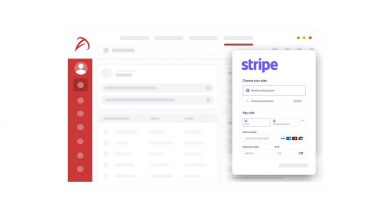Security Partner Growth: Managed Services with Defender & Sentinel
MSSPs can use Microsoft Sentinel, a cloud-native SIEM, to aggregate and analyze security data from a wide range of sources, including on-premises systems, multi-cloud environments, and third-party applications.
 Managed Security Services Providers (MSSPs) can leverage Microsoft Defender and Microsoft Sentinel to deliver comprehensive, scalable, and efficient cybersecurity solutions to their clients.
Managed Security Services Providers (MSSPs) can leverage Microsoft Defender and Microsoft Sentinel to deliver comprehensive, scalable, and efficient cybersecurity solutions to their clients.
These two Microsoft tools complement each other, combining extended detection and response (XDR) capabilities with security information and event management (SIEM) and security orchestration, automation, and response (SOAR) functionalities.
Here’s how MSSPs can utilize these tools to provide robust security services:
1. Centralized Threat Detection and Visibility
MSSPs can use Microsoft Sentinel, a cloud-native SIEM, to aggregate and analyze security data from a wide range of sources, including on-premises systems, multi-cloud environments, and third-party applications. Sentinel’s ability to ingest logs from various endpoints, networks, and applications provides a centralized view of an organization’s security posture.
Paired with Microsoft Defender, an XDR solution, MSSPs can extend this visibility across endpoints, identities, email, cloud apps, and collaboration tools. Defender’s incident-level insights allow MSSPs to correlate alerts and detect sophisticated threats across the entire attack chain, giving clients a unified and proactive defense system.
2. Proactive Threat Hunting and Intelligence
Microsoft Sentinel incorporates advanced analytics, artificial intelligence (AI), and Microsoft’s extensive threat intelligence to identify potential threats that might otherwise go unnoticed. MSSPs can configure custom detection rules and use prebuilt queries to hunt for anomalies or emerging risks tailored to a client’s environment.
Meanwhile, Microsoft Defender provides automated threat detection and disruption capabilities, leveraging real-time telemetry from endpoints and other systems. MSSPs can combine these tools to offer proactive threat hunting services, identifying and neutralizing risks before they escalate, all while reducing the burden on the client’s internal teams.
3. Automated Response and Remediation
Sentinel’s SOAR capabilities enable MSSPs to automate repetitive tasks and orchestrate responses to security incidents using playbooks built on Azure Logic Apps. For instance, when Defender detects a phishing attempt or malware on an endpoint, Sentinel can trigger an automated workflow to isolate the affected device, block malicious IPs, or notify the client’s security team.
MSSPs can customize these workflows to align with a client’s specific needs, ensuring rapid containment and remediation. This automation reduces response times and allows MSSPs to manage multiple clients efficiently without sacrificing quality.
4. Seamless Integration with Microsoft Ecosystem
Both Defender and Sentinel integrate natively with other Microsoft security tools (e.g., Microsoft 365 Defender, Azure Defender, and Microsoft Defender for Cloud) and broader Azure services. MSSPs can deploy these solutions within a client’s existing Microsoft environment, minimizing setup complexity and maximizing the value of their Microsoft investments.
For example, Defender can protect Microsoft 365 users by monitoring email and identity-based threats, while Sentinel collects and analyzes logs from Azure resources and Office 365 audit data—often at no additional ingestion cost. This seamless integration allows MSSPs to offer end-to-end protection without requiring clients to overhaul their infrastructure.
5. Scalability and Cost Efficiency
Sentinel’s cloud-native architecture eliminates the need for on-premises hardware, enabling MSSPs to scale services dynamically based on client needs. Clients only pay for the data they ingest and analyze, making it a cost-effective solution for organizations of all sizes. Defender complements this by providing scalable endpoint and application protection without the overhead of traditional security tools.
MSSPs can offer tiered service packages—such as endpoint-focused monitoring with Defender or comprehensive SIEM coverage with Sentinel—tailoring solutions to fit budget and risk profiles while maintaining high efficacy.
6. 24/7 Monitoring and Expert Management
MSSPs can operate a Security Operations Center (SOC) powered by Defender and Sentinel, delivering round-the-clock monitoring and incident response. Sentinel’s dashboards and analytics provide MSSPs with real-time insights into client environments, while Defender’s automated attack disruption capabilities reduce the volume of alerts requiring manual intervention. By combining these tools with their own cybersecurity expertise, MSSPs can tune configurations, eliminate false positives, and prioritize genuine threats, ensuring clients receive actionable intelligence and rapid resolution.
7. Compliance and Reporting
Sentinel includes built-in features for compliance monitoring, such as dashboards aligned with standards like GDPR or HIPAA. MSSPs can use these capabilities to help clients meet regulatory requirements by generating detailed reports on security events and incident responses. Defender’s integration further enhances this by providing visibility into endpoint and identity compliance risks. MSSPs can offer compliance-as-a-service, assisting clients with audits and ensuring their security posture aligns with industry mandates.
Example Workflow
- Detection: Defender identifies a suspicious login attempt on a client’s Microsoft 365 account and flags it as a potential identity threat.
- Analysis: Sentinel correlates this alert with unusual network activity from the same IP address, using AI-driven analytics to confirm a coordinated attack.
- Response: An MSSP-configured playbook in Sentinel automatically locks the compromised account, notifies the client, and initiates a forensic investigation using Defender’s endpoint data.
- Reporting: The MSSP provides the client with a detailed incident report, including remediation steps and compliance implications, all derived from Sentinel’s centralized logs.
Benefits for Clients
- Enhanced security through integrated XDR and SIEM capabilities.
- Reduced operational overhead with automation and cloud scalability.
- Access to expert MSSP resources, augmenting in-house teams.
- Cost savings by leveraging existing Microsoft tools and avoiding infrastructure investments.
By combining Microsoft Defender’s real-time protection with Sentinel’s enterprise-wide analytics and automation, MSSPs can deliver tailored, high-value security solutions that protect clients against evolving cyber threats while optimizing their technology investments.



